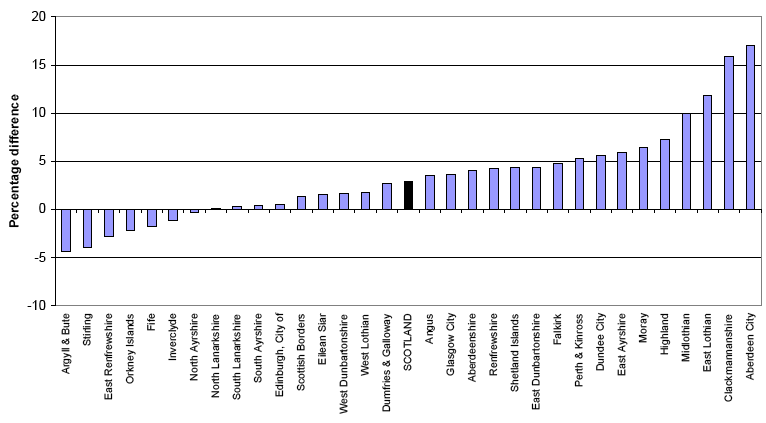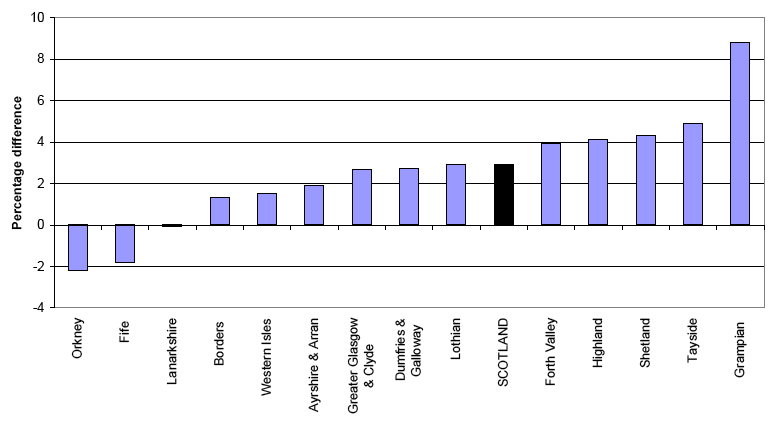
3.1 The differences between the latest sub-national projections and the previous 2006-based projections are summarised in Table 5 which compares the populations of administrative areas under the two projections at selected years (2008, 2013, 2018, 2023, 2028 and 2031).
3.2 The 2006-based projection showed Scotland’s population to be 5.16 million by 2008 compared with the 2008 mid-year estimate of 5.17 million. The difference of about 11,400 is due to more people migrating to Scotland than had been assumed and also there were more births and slightly fewer deaths than had been assumed. By 2013 the difference between Scotland’s population under the two projections increases to about 38,000, though some of the difference is accounted for by the higher starting population in 2008. The difference by 2018 is about 66,000 (from 5.29 million under the 2006-based projection to 5.36 million under the 2008-based projection). By 2023 the difference is about 98,000, by 2028 about 135,000, and by 2031 almost 158,000. There are similar differences by administrative areas under the two projections. These differences are seen in Figure 8 and Figure 9 which show the percentage difference between the 2006 and 2008-based population projections in the population projected for 2031, which was the last year of the 2006-based projections. Aberdeen City appears to have increased significantly from the 2006-based projection. This is due to an adjustment in the migration assumed for this area as analysis has shown that we have under-estimated Aberdeen City’s population in previous rounds of projections. Clackmannanshire also appears to have increased significantly from the 2006-based projection, and this is due to higher net migration for the last 5 years.
Figure 8 Percentage difference between projected 2031 population using 2006-based and 2008-based projections, by council area

Figure 9 Percentage difference between 2006-based and 2008-based population projections in 2031, by NHS board area

3.3 Figure 8 shows that, by 2031, the population of most council areas is higher under the 2008-based projection than under the 2006-based projection. There are seven exceptions (Argyll & Bute, Stirling, East Renfrewshire, Orkney, Fife, Inverclyde, and North Ayrshire). In the other council areas, the 2008-based projections are higher, with the biggest percentage increases in Aberdeen City, Clackmannanshire and East Lothian. Figure 9 shows that by 2031 eleven NHS boards have higher populations under the 2008-based projection, with the exceptions being Orkney, Fife and Lanarkshire. These changes have come about because of the different starting point in the 2008 mid-year estimate and because of the changes to the fertility, mortality and migration assumptions. When looking at the comparisons between the projections it is important to bear in mind the uses and limitation of projections described in Section 6. More details about the assumptions can be found in Section 5.